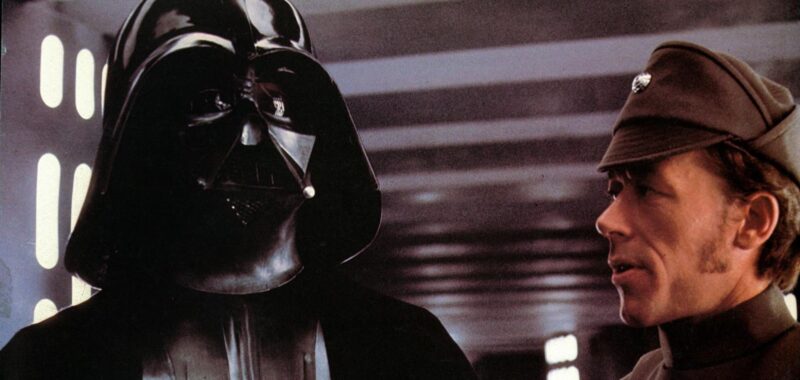David Prowse as Darth Vader in a scene from the film ‘Star Wars’, 1977. (Photo by 20th Century-Fox/Getty Images)
Getty Images
Darth Vader has been added to Fortnite, and the iconic Star Wars villain has sparked controversy, debate and a legal challenge from SAG-AFTRA.
This version of Vader is an NPC companion who can fight alongside players and speak to them in real time, thanks to generative AI.
At best, Darth Vader parrots vaguely Vaderish lines (boasting of the power of the Force, and so forth), but of course, Fortnite players quickly managed to make Vader break character and say something offensive.
Why Is Fortnite’s Darth Vader So Controversial?
Hallucinations and the slippery, unpredictable nature of language makes safeguarding a generative AI model a fiendishly difficult task, and some players managed to break the guardrails.
Almost immediately, Vader was saying slurs and swearing at players.
This was a bad look, given Fortnite’s young user base, but there were also plenty of wholesome, genuinely funny moments that emerged from the AI-generated chaos.
Once the novelty wore off and the capacity to offend was patched out by Epic Games, players started to question the ethics of the Fortnite experiment.
AI-Generated Darth Vader Sparked Debate
The use of generative AI to mimic the distinctive vocal delivery of James Earl Jones sparked backlash from some commentators who felt that the stunt was disrespectful.
However, the AI-generated voice was created in collaboration with Jones’ estate, and Jones himself assisted in training an AI voice clone before his death, to ensure that Vader would live on, in some form.
Whether or not Jones would have wanted his character to feature in Fortnite is debatable, but strangely enough, Disney’s Star Wars has inspired similar debates in the past.
Disney has been dabbling in digital necromancy ever since Rogue One, which featured a recreation of Peter Cushing’s likeness as Grand Moff Tarkin.
Digital recreations of a young Carrie Fisher and Mark Hamill (as Princess Leia and Luke Skywalker) have also appeared in the franchise. At the time, Disney’s decision proved controversial, as the characters could have simply been portrayed by young actors.
Currently, replicating the likeness of a performer via generative AI is difficult and costly. However, generative AI has proved a potent threat to the livelihood of voice actors, with the technology able to replicate voices quickly and cheaply, even if the results sound rather flat.
Epic Games used a combination of Google’s Gemini and ElevenLabs’ Flash v2.5 to generate Vader’s responses. Fortnite’s Darth Vader, when he’s not swearing at players, isn’t particularly interesting to talk to—he’s a watered down recreation of an iconic character.
The Screen Actors Guild – American Federation of Television and Radio Artists (SAG-AFTRA) took note of Fortnite’s AI-generated Darth Vader and responded with a press release:
“Fortnite’s signatory company, Llama Productions, chose to replace the work of human performers with A.I. technology. Unfortunately, they did so without providing any notice of their intent to do this and without bargaining with us over appropriate terms. As such, we have filed an unfair labor practice charge with the NLRB against Llama Productions.”
It should be noted that SAG-AFTRA is not questioning the right of performers to license AI clones of themselves, but highlighting that Fortnite’s Darth Vader could have been played by a voice actor.
“However, we must protect our right to bargain terms and conditions around uses of voice that replace the work of our members,” the union wrote, “including those who previously did the work of matching Darth Vader’s iconic rhythm and tone in video games.”
MORE FROM FORBES

